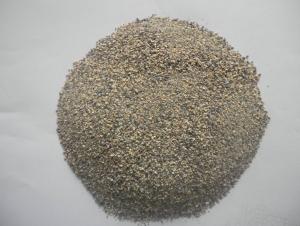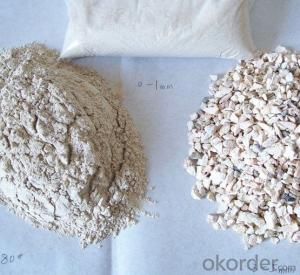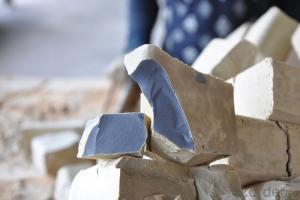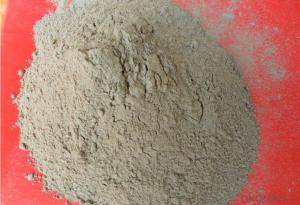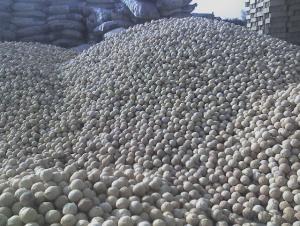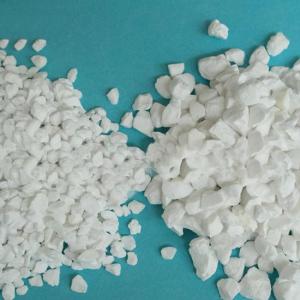Raw Materials for Refractory:Supplier 85% Al2O3 1-3mm Calcined Bauxite with Low Price
- Loading Port:
- China main port
- Payment Terms:
- TT OR LC
- Min Order Qty:
- 25 m.t.
- Supply Capability:
- 2000 m.t./month
OKorder Service Pledge
OKorder Financial Service
You Might Also Like
Quick Details
| Place of Origin: | Henan, China (Mainland) | Shape: | Block | Material: | Alumina Block |
| SiO2 Content (%): | <6%< span=""> | Al2O3 Content (%): | 85% | MgO Content (%): | 0 |
| CaO Content (%): | <0.6%< span=""> | Refractoriness (Degree): | 1770°< Refractoriness< 2000° | CrO Content (%): | 0 |
| SiC Content (%): | 0 | Model Number: | bauxite | Brand Name: | CNBM |
| bulk density: | >3.0g/cm3 | color: | faint yellow , pale white | Dimensions: | 3-5mm |
| Moisture (%): | <4%< span=""> | Concentrate Or Not: | Non-concentrate |
Packaging & Delivery
| Packaging Details: | 25/50 kgs/pvc bag, 1MT/big bag |
| Delivery Detail: | 12 working days after payment |

Advantages
Cost advantage (Manufacturer-Direct sale);
High cost-effective;
Good fireproof insulation;
High bulk density.
Application
Widely used in aluminium metallurgy, precision casting, refractory product, ceramic fiber, alumina cement etc .
General description
As a large and class kiln & furnace expert, we also have our own raw material mine in Shanxi which is rich in bauxite so that we have the cost advantage in the engineering procurement construction of industrial kilns & furnaces. So our company is also an experienced Bauxite manufacturer. High grade calcined bauxite is used for raw material of kinds of our own refractory products.
Physical & Chemical Index
GRADE | CHEMICAL CONTENT,% | PHYCICAL PROPERTIES | ||
Al2O3 (%) | Fe2O3 (%) | DENSITY (g/cm3) | Refractoriness (℃) | |
GAL-70 | ≥70 | ≤2.0 | ≥2.75 | >1790 |
GAL-80 | ≥80 | ≤2.0 | ≥2.90 | >1790 |
GAL-85 | ≥85 | ≤1.8 | ≥3.10 | >1790 |
Remark: We could produce various sizes according to customers’ requirements.

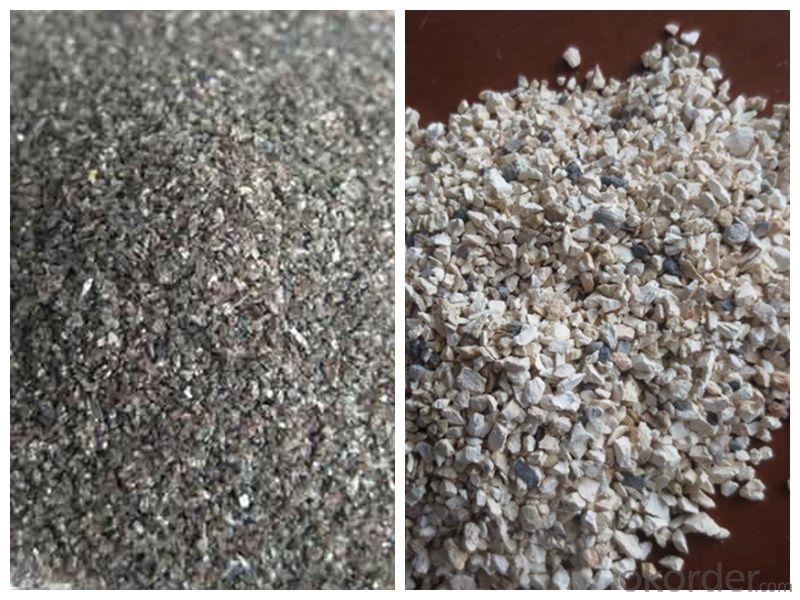
Our Service:
1. Your inquiry related to our products or prices will be replied in 24hours.
2. Manufacturer with large capacity, ensure the fast production cycle after confirmed the order.
3. Our professional technicians will answer your entire enquiry in patient.
4. To meet the refractory solutions, we can serve as your instructions.
5. Protection of sales area and private information for our entire customer.
If you’ve kind enquiries, please don’t hesitate to let us know. ^_^
- Q: What is the best refractory company?
- Recently, many of the activities of palladium ah, find a few big beauty shoot videos, but also to send jewelry, and draw, seems to be the need to vigorously develop the market China.
- Q: The primary problem, does the gas permeable brick is fired refractory bricks(refractory) ?
- Yes. After moulding by casting in the firing of 1450 ° degrees.
- Q: What's the function of aluminium dihydrogen phosphate on the refractories?
- Mainly used for binder of high-temperature furnace refractory. Characteristics of liquid aluminum dihydrogen phosphate, castable. solid used for refractory spraying coating, chamotte, ceramic construction, which has high break resistance after being dried in 350-500 ° C, phosphate bricks. Characteristics of the solid aluminum dihydrogen phosphate, binding agent used for castable and casting industry: together with the refractory aggregate, ramming mixes at room temperature: Easy to mix, crush resistance, hydration resistance, chamotte, will not become soft even if soaked or boiling in water, molding. Liquid use refractory spraying coating, mainly used for corundum, chrome corundum water gap in refractory industry. The production of chrome aluminum zirconium corundum brick for water-coal-slurry gasifier is especially suitable for site construction applications mainly used for the electrical industry, high-temperature kiln and furnace, hardener, after mixing between 90-110 ° C for 4-24 hours at a constant temperature, forming strong bonding strength, electrical insulation, heat treatment resistance furnace
- Q: What kind of material is refractory fiber?
- 1 Refractory fiber cloth can be divided into resistant to temperature of 600 degrees and 1000 degrees temperature resistant (short-term resistance to extreme temperature 1260 degrees). The thickness of two kinds of cloth is typically 1mm 1.5mm 2mm 3mm 4mm 5mm with the width of 25mm-- 1200mm. 2 Specially woven fiber is not easy to fall off, does not irritate the skin, has large tensile strength. It is white and inexpensive. After contacting with water, the tensile force will be reduced. The thickness of refractory fiber cloth whose resistance of temperature is 1260 degree is generally 2mm 3mm 5mm, and the width is 25mm - 1200mm. It has high temperature resistance, great tensile force, and it is non-toxic, white, resistant to fire and water. We can offer products with different specifications according to customer requirements. It has high temperature resistance, low heat conductivity coefficient, thermal shock resistance, and low thermal capacity; It has excellent high-temperature insulation performance and long service life; It has anti-melting and resistance to erosion of aluminum, zinc and other nonferrous metals; It has good strength under low temperatures and high temperatures; It is non-toxic, harmless, and environmental-friendly; It has convenient construction and installation; Specifications and models are 1.5mm - 6mm, with a general width of 1m, (nickel-chromium alloy wire reinforced, reinforced stainless steel wire, glass fiber reinforced, ceramic fiber coated fabrics, ceramics fiber slag cloth, sintered ceramic fiber cloth, ceramic fiber fumigation cloth). We can also provide other specifications according to customer requirements.
- Q: Is the linear change on reheating the same as heating permanent linear change of refractory material?
- “+”represents expansion. the afterexpansion and aftercontraction after cooled to be at room temperature. The change may significantly damage the masonry of thermal kiln. There are regulations on the linear change on reheating of common refractory material in the national standard. Some physical chemical changes may continue. It is defined as the change from being heated to the specified temperature of refractory material sample. Heat preserving for a while till afte cooling to be at room temperature, then the residual will expand or contract in its length, heat preservation for a while, organization vitrification, the irreversible changes of its length refers to heating the firing refractory to be at high temperature, so as to make the volume of refractory materials expand or contract, due to the influence of uneven temperature or lack of time, otherwise it will cause the deformation of the refractory ball and make this indicator within standard even reach smaller value, so firing control must be strengthened in product production. But it is should not be too high. For refractory materials with same chemical composition, the linear change on reheating is produced in the heating process. Properly increasing sintering temperature and prolonging the holding time is an effective process measures, make its firing inadequate. When subjected to high temperature, it can reduce the thermal shock resistance. Minus sign "-" represents contraction. The permanent line rate refers to heating the fire refractory ball to the specified temperature. Linear change on reheating, also known as residual linear change, is an important indicator to assess the quality of refractory in the long time use. To control the permanent line rate within the standard or reach the minimum value.
- Q: What is the definition and classification of amorphous fire resistance materials?
- 9.8. brick made of refractory bone material and powder material can be used directly or after adding appropriate liquid formulation Refractory paint. Refractory slinging material 6. Prefabricated cubes, bonding agent or other additives. fire-resistance sparying material compround additives. Refractory pressed into the material, binder. Refractory ramming material 3, The material is a new fire proof material without calcination Heavy aggregate and lightweight aggregate: Inorganic binding agent and organic bond, its fire resistance is not less than 1580. Refractory castables 2 mouldable refractory Classification according to the type of bonding agent: 1. Classification according to refractory aggregate. According to the production and construction method, refractory mud or refractory mire, with a certain proportion of the mixture
- Q: What parts of cement kilns are refractories used on?
- These parts are decomposition furnace, smoke chamber, kiln, kiln hood, grate?cooler, tertiary air duct and coal pipe.
- Q: What are the materials of class A fire resistant window?
- Fixed class A fire resistant window should be made up of steel frame, steel casement, and fireproof glass. Fire windows, made up of steel frame, steel casement, and fireproof glass, refers to window that isolate and stop the fire from spreading. Fire window is named according to the main materials of the frame and casement. Window frame is made up of steel and casement wood, vise versa. I hope it is useful.
- Q: How to make the service life of refractory materials longer?
- Take acid resistant refractory materials as example: the atmosphere should be acidic atmosphere, if used in an environment whose temperature is 1900℃, it would exacerbate the loss of refractory materials, so don’t use overloaded. Second, select the appropriate refractory materials according to the environment. For example, if its operating temperature is 1800℃, generally speaking, the normal use of it according to the instruction of refractory materials would be fine.
- Q: For refractory, why is it necessary to store the first mixing materials for some time under proper moisture and temperature?
- It is mainly to remove gas form chemical reactions in the pug, give full play to plasticity and binding properties of combined, and store unburned?brick whose cememting agent is phosphoric?acid or aluminium?phosphate for some time under proper moisture and temperature. For example, to avoid the formed bricks in the initial stage of drying and firing form cracking due to hydration of calcium oxide. Mixing materials is to store the first mixing materials for some time under proper moisture and temperature in order to improve the evenness and moldability of pud, such as making the distribution of combined clay and water more even. The length of storing chiefly depends on the process requirements and the characteristics of blanks. For the producing pug of high temperature kiln furnitures, the storing time is longer. The function of storing mxing materials varies with different natures of blanks. For honeycomb ceramics, it is to fully digest calcium oxide in blanks. For storing magnesia brick blanks containing much calcium oxide, it should be stored for some time in proper humidity and temperature.
Send your message to us
Raw Materials for Refractory:Supplier 85% Al2O3 1-3mm Calcined Bauxite with Low Price
- Loading Port:
- China main port
- Payment Terms:
- TT OR LC
- Min Order Qty:
- 25 m.t.
- Supply Capability:
- 2000 m.t./month
OKorder Service Pledge
OKorder Financial Service
Similar products
Hot products
Hot Searches
Related keywords









